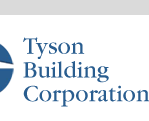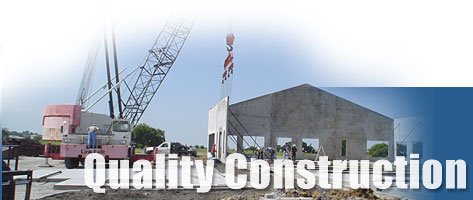|
Pre-engineered Steel Building, Tilt-wall,
Traditional Construction or a Hybrid –
|
|
How do you know which one is right for you?
|
Selecting a building type can be a very complicated decision because of the number of variables involved and your specific needs. You will need to evaluate the pros and cons of the building types as they pertain to your situation and your priorities. Our intent is to provide you with some basic information about these building types so when you discuss your specific needs with your design-builder or architect you will be able to ask the correct questions to make an informed decision. We will be talking only about differences among the different types of exterior or shell construction. Just click on the topic you want to know more about:
 Delivery time Delivery time
- Pre-engineered steel buildings are the fastest to erect. The engineer for the steel building manufacturer certifies to the structural soundness of the steel building so less time is required to design and engineer the structure. Also, city approval and permitting is quicker.
- Tilt-wall construction takes about 60-100% longer to build than a comparable steel building.
- Traditional construction takes longer than tilt-wall and steel buildings. It is difficult to know how much longer it takes because of the number of variables that are involved in this type of structure. For example, the size of the building blocks or bricks can make a difference.
Back to top
  Cost Cost
- Pre-engineered steel buildings are the least expensive to build, but it can be harder to get financing as the banking industry views the steel building as less durable than other construction methods. However, steel buildings may require additional costs for insulation, firewalls, stucco or brick facades, etc.
- Tilt-wall construction and traditional construction do not pose any additional roadblocks for financing. Tilt-wall is about twice the cost of pre-engineered steel with traditional construction being the most expensive. The cost of a hybrid structure, a combination of two or more of these building methods, falls some where between the cost of pre-engineered steel and the traditional construction method. Tilt–wall structures cost more than pre-engineered steel because a heavier foundation is required to support the walls. With both tilt-wall and traditional construction, more engineering and design is required.
Back to top
 Shape Shape
- Pre-engineered steel and tilt-wall construction is recommended when the structure can be square, rectangle, L shaped, or T shaped.
- If angles, arches and other architectural elements are required, traditional construction is recommended. Traditional construction is used mostly for smaller buildings when the owner wants the creativity of an architect to design a very unique structure.
- Tilt-wall is recommended for buildings of at least 10,000 sq. ft. and larger, anything less is too expensive. Tilt-wall becomes more cost effective with larger buildings.
Back to top
 Look/appearance Look/appearance
- Cities tend not to like the look of pre-engineered steel buildings and often require a minimum of 70% stone or masonry façade. Stucco can also be used in place of stone or masonry.
- Tilt-wall is considered masonry so there are no additional requirements for the façade.
- Architects use traditional construction more often because it gives them more flexibility in the design of a structure.
Back to top
 Roof Roof
Steel roofs resist hail and because of their durability you may get a discount on hazard insurance. Steel roofs last 25 years or more and cost about 20% less to install than a built-up roof. Built-up roofs will require maintenance and repairs in about 5 years.
Back to top
  Ongoing costs and maintenance Ongoing costs and maintenance
- Fire Hazard. The fire rating for pre-engineered steel and tilt-wall construction is higher than traditional so there are savings available on fire insurance. Steel and traditional construction may add costs if firewalls are required.
- Theft. It is easier to break into a steel building than other types since steel walls or roofs can be cut with steel cutters.
- On-going Maintenance. Steel bends easily if hit by pallets and/or forklifts, while tilt-wall does not. The solution to steel damage is a 7-foot masonry wainscot around the interior perimeter.
- Utility Costs. Pre-engineered steel buildings are very energy efficient if you add 2-3 inches of insulation. This small amount of insulation is equivalent to 32 inches of masonry. Tilt-walls have no insulation R-value and are expensive to insulate.
Back to top
 Life of the building Life of the building
With a good foundation and routine maintenance, any building you choose should last for decades. In the past, the walls of steel buildings would need replacement from time to time, but today, you can get pre-engineered steel buildings with a paint warranty that lasts from 5 to 25 years.
Back to top
 A word about hybrids A word about hybrids
As the costs of construction and ongoing maintenance continue to rise, architects, engineers and general contractors need to design and build structures that incorporate the best features of each construction method. For example if you need a larger building with greater durability requirements, a careful analysis will often demonstrate that a concrete tilt-wall building or a blend of steel systems and concrete offer the best mix of cost-effectiveness and long term value. Just make sure you select a general contractor who is well versed in the advantages and limitations of all methods of construction to help determine what is the best approach for your project.
For a printable version of Pre-engineered Steel Building…
Back to top
|
 |









